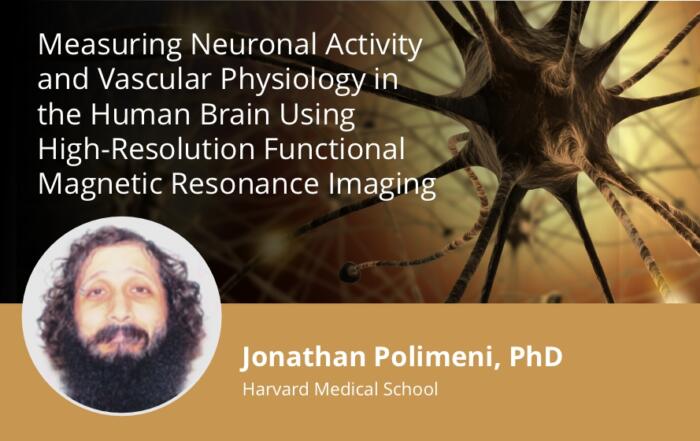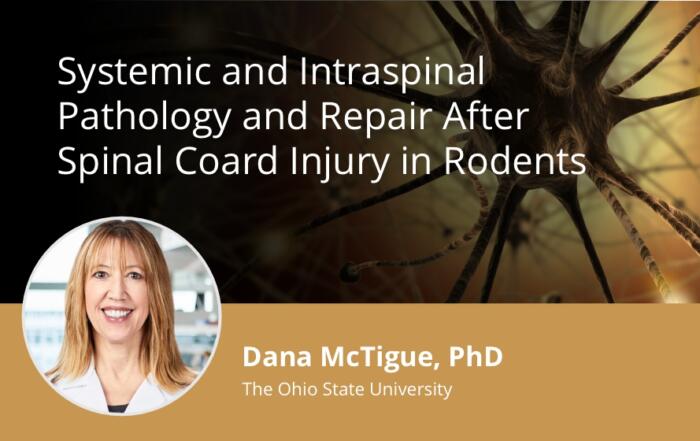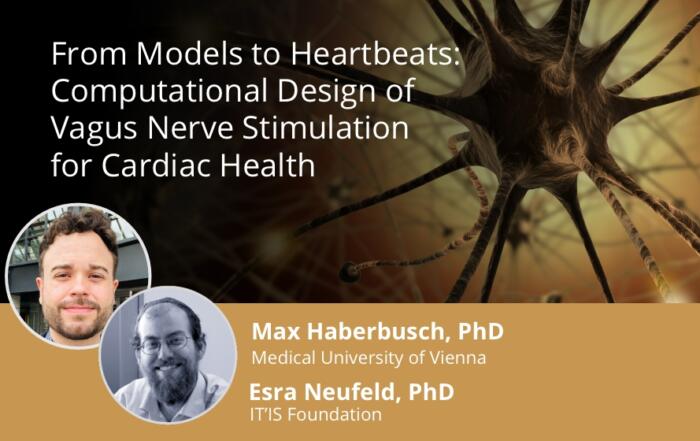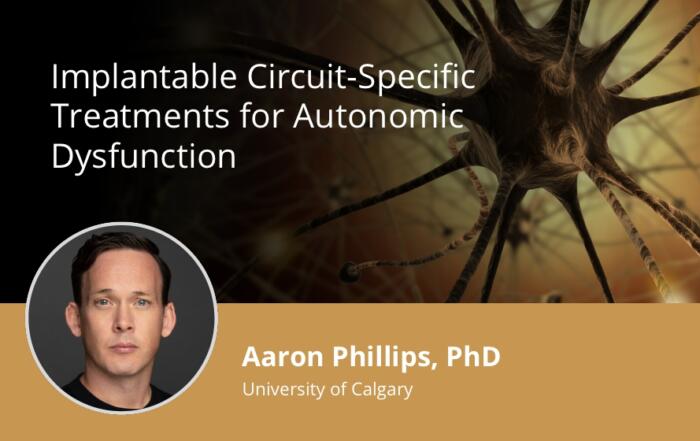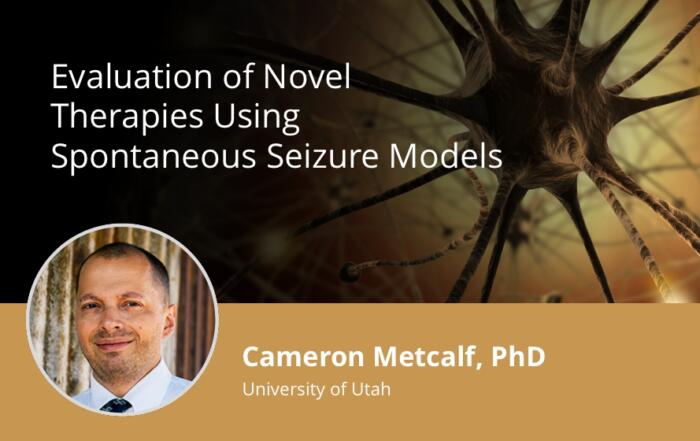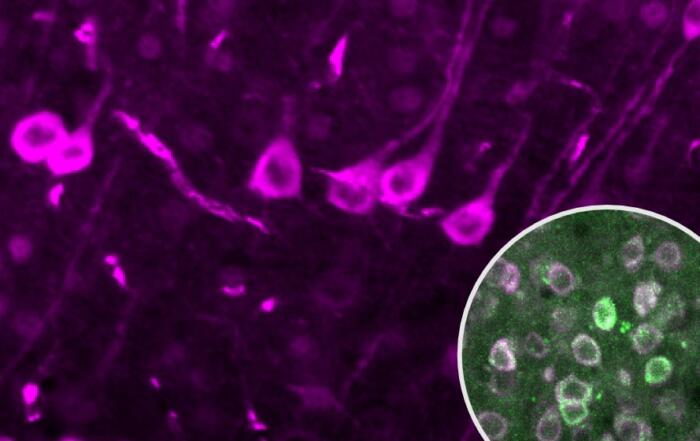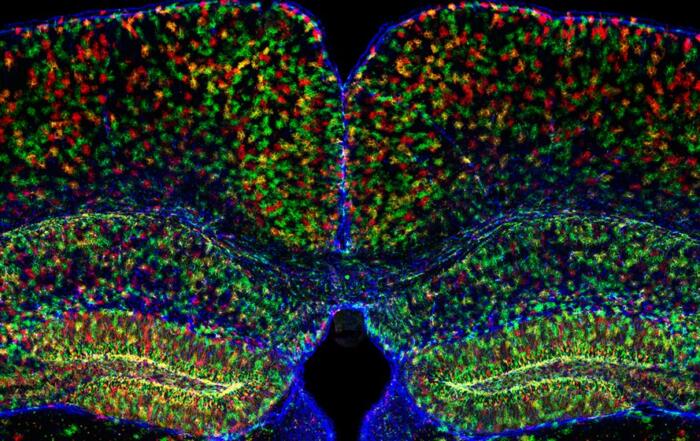Dr. Ann McKee describes the emergence of chronic traumatic encephalopathy (CTE) as a distinct disease over the past 20 years.
Since 2003, hundreds of individuals have been diagnosed at postmortem examination with CTE. CTE has been reported in amateur and professional athletes, military service members, and individuals exposed to head banging, interpersonal violence, and poorly controlled epilepsy. The pathology of CTE is unique, characterized by a pathognomonic lesion consisting of a perivascular accumulation of neuronal phosphorylated tau (p-tau) at the depths of the cortical sulci and a distinctive molecular structural configuration of p-tau fibrils that is unlike the changes observed with aging, Alzheimer’s disease, or any other tauopathy.
Key Topics Include:
- Computational 3-D and finite element models predict the location of p-tau pathology as the brain regions that undergo the greatest mechanical deformation during head impact injury. CTE is definitively diagnosed by postmortem neuropathological examination; what is the corresponding clinical condition syndrome known as Traumatic Encephalopathy Syndrome (TES)?
- Is there a dose-response relationship between repetitive head impacts (RHI) and CTE?
- Is there a causal relationship between cumulative and magnitude of RHI and CTE?
- What are other non-tau pathologies that occur after RHI?
Presenters
Professor / Director
Neurology and Pathology / Neuropathology Core
Boston University
Dr. Ann McKee completed her undergraduate studies at the University of Wisconsin and received her medical degree from the Case Western Reserve School of Medicine.
Additional Content From American Physiological Society
Molecular Signals Mediating Increases in Muscle Size and Function
In this webinar, Dr. Bert Blaauw elucidates skeletal muscle regulatory pathways and offers approaches to tackle muscle deficits for therapy.
Getting to the Heart of Cardiovascular Research: From Yesterday to Today and Looking Towards Tomorrow
Dr. Melanie White presents the various methods for assessing cardiac function in the context of pathology, spanning from in vitro to in vivo techniques, and how she integrates these with cutting-edge mass spectrometry in her research on cardiovascular disease pathogenesis.
Organoid Meets Microelectrode Array (MEA) – Accelerating Drug Discovery and Development
In this webinar, Dr. Sven Schönecker and Sara Mirsadeghi, MSc, will discuss 3D Mesh Microelectrode Arrays (MEA) including new developments and applications.
Additional Content From Society for Neuroscience
Compensatory Mechanisms in Parkinson’s Disease
Bas Bloem, MD reviews compensatory mechanisms, including cerebral plasticity and behavioral adaptation, in persons with Parkinson's disease.
Measuring Neuronal Activity and Vascular Physiology in the Human Brain Using High-Resolution Functional Magnetic Resonance Imaging
Join Jonathan Polimeni, PhD for a deep dive into the physics and physiology of fMRI.
Cellular Brain Repair for Parkinson’s Disease: Is the Answer in the (Biomaterial) Matrix?
Hear Eilís Dowd, PhD highlight her lab's recent data demonstrating that dopaminergic cell replacement in the Parkinsonian rodent brain, using both fetal and induced stem cell-derived cells, is enhanced when the cells are transplanted in a neurotrophin-enriched collagen hydrogel.
Additional Content From Federation of European Neuroscience Societies
Unveiling the Primate Brain: Advanced Insights through Ultra-Dense Electrophysiology
In this webinar, Drs. Kari Hoffman, André Bastos, and Thilo Womelsdorf present their research on the neurophysiological basis of learning, cognition, and sensory processing, including attention and connectivity between brain regions in non-human primates.
Systemic and Intraspinal Pathology and Repair After Spinal Cord Injury in Rodents
Join Dana McTigue for a deep dive into her work studying spinal cord injury in rodents and its resulting pathological features in lower organs.
From Models to Heartbeats: Computational Design of Vagus Nerve Stimulation for Cardiac Health
This webinar explores closed-loop cardiac rhythm control restoration in heart-transplant patients from model development to in silico regulatory evidence for safety and efficacy trials.
Additional Content From American Autonomic Society
Implantable Circuit-Specific Treatments for Autonomic Dysfunction
In this webinar, Dr. Aaron Phillips presents his research on the neural mechanisms of hemodynamic stability.
Evaluation of Novel Therapies Using Spontaneous Seizure Models
In this webinar, Dr. Cameron Metcalf covers the technical requirements and benefits of spontaneous seizure models, addressing the challenges and optimization of 24/7 video-EEG data collection for epilepsy therapy development.
Impact of Sleep and Circadian Disruption on Human Health and Disease Risk
Join Josiane Broussard, PhD as she explains the links between sleep and circadian disruption and cardiovascular and metabolic health.
Additional Content From Scientist.com
Circulating Nucleosome Quantification (Nu.Q®) Technology for Monitoring Target Engagement and Adverse Events in Oncology Trials
Join us for a comprehensive webinar featuring experts in epigenetics and assay development, focusing on the scientific foundations and applications of Nucleosome Quantification (Nu.Q®) Technology in the realms of drug development and disease monitoring.
Innovative Approaches to Assessing Thyroid Disruption: The 3D Human Thyroid Microtissue Model
Dr. Chad Deisenroth, PhD, from the US EPA, introduces an advanced human in vitro 3D thyroid microtissue model designed to evaluate thyroid hormone disruption, addressing current challenges with existing models.
Discover the Freshness of Frozen PBMCs – An Assessment of Cryopreservation Impact on T Cell Activation and Phenotype
Discover the impact of cryopreservation of PBMCs on T cell activation and phenotype in Lonza’s free webinar.
Related Content
Spatiotemporal Dynamics of Calcium and Neurotransmitters in Awake Mouse Models of Epilepsy
In this webinar, Dr. Vincent Magloire and Dr. Ken Berglund present their work on the spatiotemporal dynamics of neurotransmitter and calcium imaging during seizure evolution in awake head-fixed mice and models of epilepsy.
Functional Ultrasound Neuroimaging: Principles, Applications, & Perspectives
Dr. Mickael Tanter presents his work on functional ultrasound neuroimaging, including an overview and translation to clinical applications.
Calcium Signaling in Neurons and Glia in the Mouse Brain During Exploratory Behavior
In this webinar, Alexey Semyanov, PhD, and Amit Agarwal, PhD, present their work on activity and calcium signaling in neurons, astrocytes, and oligodendrocyte precursor cells (OPCs) during exploratory locomotion behavior in awake and head-fixed mice.





